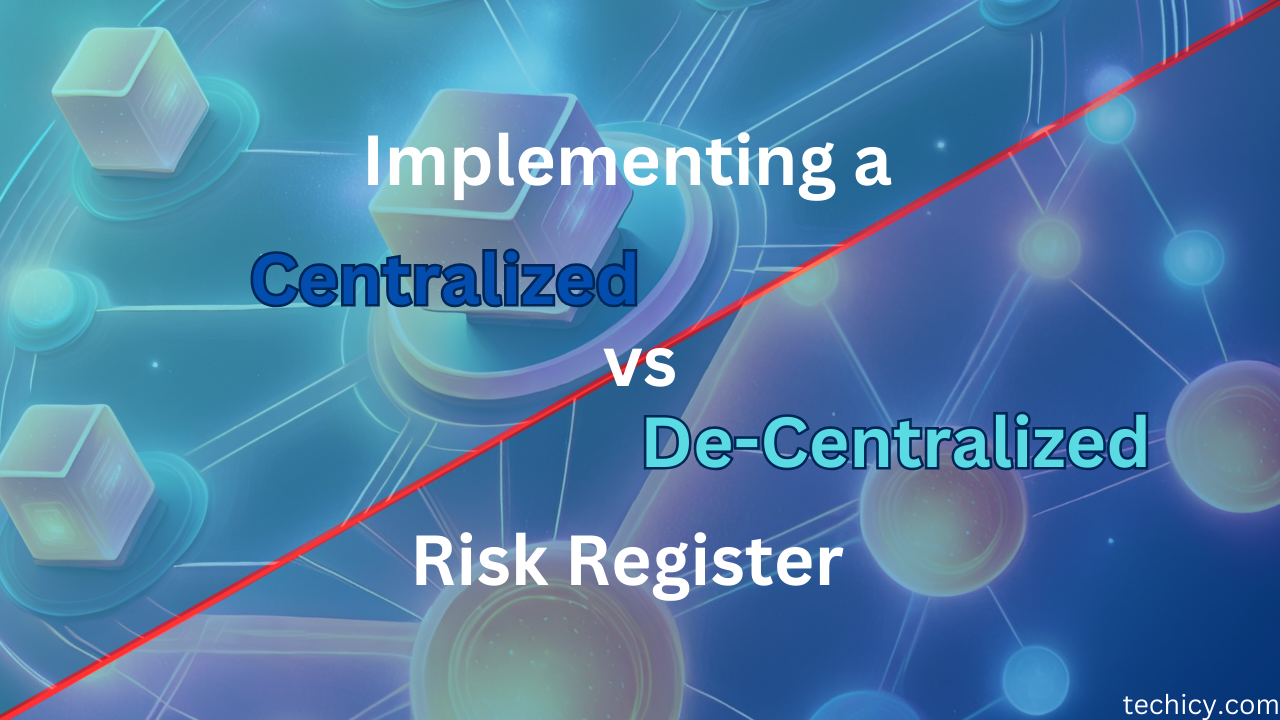In the ever-evolving landscape of modern business, risk management has become a critical aspect of corporate strategy. Organizations must identify, assess, and mitigate risks effectively to safeguard their operations and enhance their long-term sustainability. One of the key tools in this endeavor is the risk register, which serves as a comprehensive repository of potential risks and their associated information.
However, there’s an ongoing debate in the corporate world regarding whether to implement a centralized or decentralized risk register. Each approach has its own set of challenges and solutions, and understanding the nuances of each can help organizations make informed decisions.
The Importance of Risk Registers
Before delving into the centralized vs. decentralized debate, it’s essential to grasp why risk registers are vital in the first place. A risk register is a structured document that systematically records and monitors potential risks within an organization. It typically includes information such as the nature of the risk, its potential impact, the likelihood of occurrence, and mitigation strategies. Risk registers provide several crucial benefits:
- Risk Visibility: They offer a clear, organized view of potential risks, helping organizations understand the threats they face.
- Decision Support: Risk registers inform decision-making by identifying areas where risk mitigation efforts should be focused.
- Compliance: In regulated industries, maintaining a risk register is often a legal requirement, helping organizations avoid penalties and maintain their reputation.
- Communication: They facilitate communication among different stakeholders, ensuring that everyone is aware of the risks and mitigation efforts.
Now, let’s explore the challenges and solutions associated with both centralized and decentralized risk registers.
Centralized Risk Register
A centralized risk register is managed by a dedicated team or department within the organization, and all risk-related data is collected, analyzed, and stored in a single location. Here are some of the challenges and solutions associated with this approach:
Challenges:
- Limited Access: The centralized nature of the risk register can lead to limited access. Business units and teams might feel detached from the process, reducing their commitment to risk management.
Solution: Implement a transparent system that allows stakeholders to view and contribute to the risk register. Use technology to provide easy access while maintaining data security.
- Data Accuracy: Centralization can create bottlenecks in updating the risk register, leading to potential inaccuracies if not managed properly.
Solution: Establish clear procedures for data entry, regular updates, and data validation. Automation tools can help streamline these processes. - Resource Dependency: Over-reliance on a central team can lead to resource bottlenecks and slow response times when addressing emerging risks.
Solution: Develop a well-defined escalation process that enables decentralized teams to report and address risks promptly without waiting for central approval.
Benefits:
- Consistency: A centralized risk register promotes consistency in risk assessment methodologies and reporting standards, making it easier to compare and analyze risks across the organization.
- Expertise: A dedicated risk management team can develop specialized expertise in identifying, assessing, and mitigating risks, leading to more effective risk management strategies.
- Comprehensive Reporting: Centralization facilitates the creation of comprehensive reports and dashboards for executives and board members, enhancing decision-making at the highest levels.
Decentralized Risk Register
In a decentralized risk register model, various departments or business units within the organization maintain their risk registers independently. While this approach offers more autonomy, it also presents unique challenges and solutions:
Challenges:
- Fragmented Data: Decentralized registers can result in fragmented data, making it challenging to get a holistic view of organizational risks.
Solution: Implement standardized templates and guidelines for risk registers across departments to ensure consistent data collection and reporting. - Duplication of Efforts: Different departments may duplicate efforts when assessing and mitigating similar risks, leading to inefficiencies.
Solution: Promote inter-departmental collaboration to share best practices and insights, reducing redundancy.
- Lack of Expertise: Some departments may not have the necessary expertise in risk management, leading to incomplete or inaccurate risk assessments.
Solution: Provide training and resources to departments to build their risk management capabilities. Establish a support network for sharing knowledge and expertise.
Benefits:
- Ownership and Accountability: Decentralized risk registers promote a sense of ownership and accountability among department heads and teams, encouraging proactive risk management.
- Faster Response: Teams can respond more quickly to emerging risks since they don’t need to wait for centralized approval.
- Contextual Knowledge: Departmental teams possess specialized knowledge about their areas of operation, allowing for a deeper understanding of specific risks.
Finding the Right Balance
The choice between a centralized and decentralized risk register is not necessarily binary. Many organizations find success in hybrid approaches that combine elements of both models. Here are some strategies to strike the right balance:
- Standardization: Standardize the format and terminology used in risk registers across the organization to ensure consistency while allowing for department-specific nuances.
- Clear Communication: Establish communication channels between central risk management teams and decentralized departments to facilitate information sharing and collaboration.
- Technology Integration: Leverage technology solutions like risk management software that enables real-time updates, easy data sharing, and automated reporting.
- Risk Culture: Foster a risk-aware culture throughout the organization, emphasizing the importance of risk management at all levels.
- Regular Audits: Conduct regular audits to ensure the accuracy and completeness of risk registers, regardless of the chosen model.
Conclusion
The debate between centralized and decentralized risk registers is not about finding a one-size-fits-all solution. It’s about tailoring your risk management approach to your organization’s unique structure, culture, and objectives. Both models have their own challenges and solutions, and the key is to strike a balance that promotes effective risk management while empowering individual departments to take ownership of their risks. In a world where risks are constantly evolving, adaptability and collaboration are the keys to successful risk management.
About Author
My name is Manpreet and I am the Content Manager at Scrut Automation, one of the leading risk observability and compliance automation SaaS platforms. I make a living creating content regarding cybersecurity and information security.
Manpreet can be reached online at manpreet@scrut.io and at our company website https://www.scrut.io/

